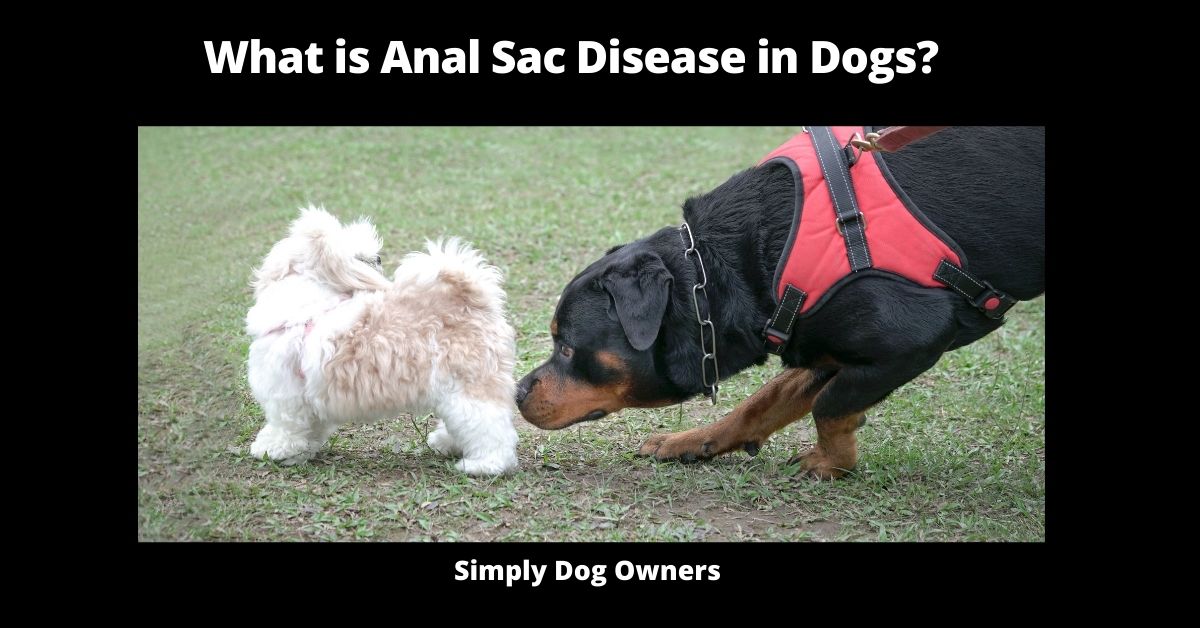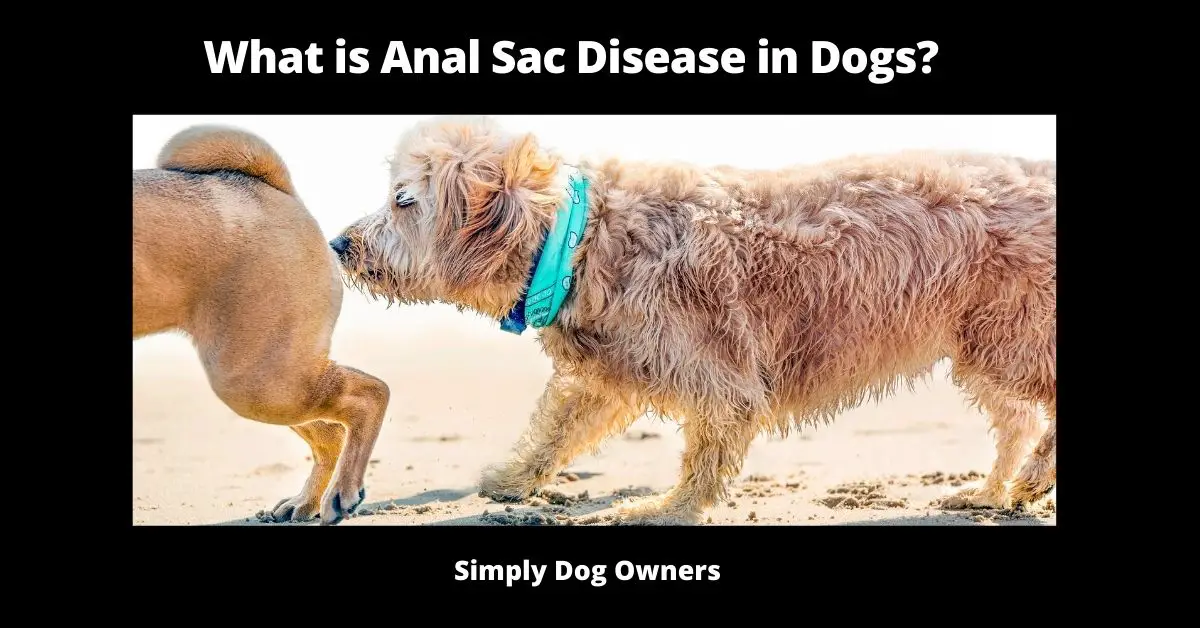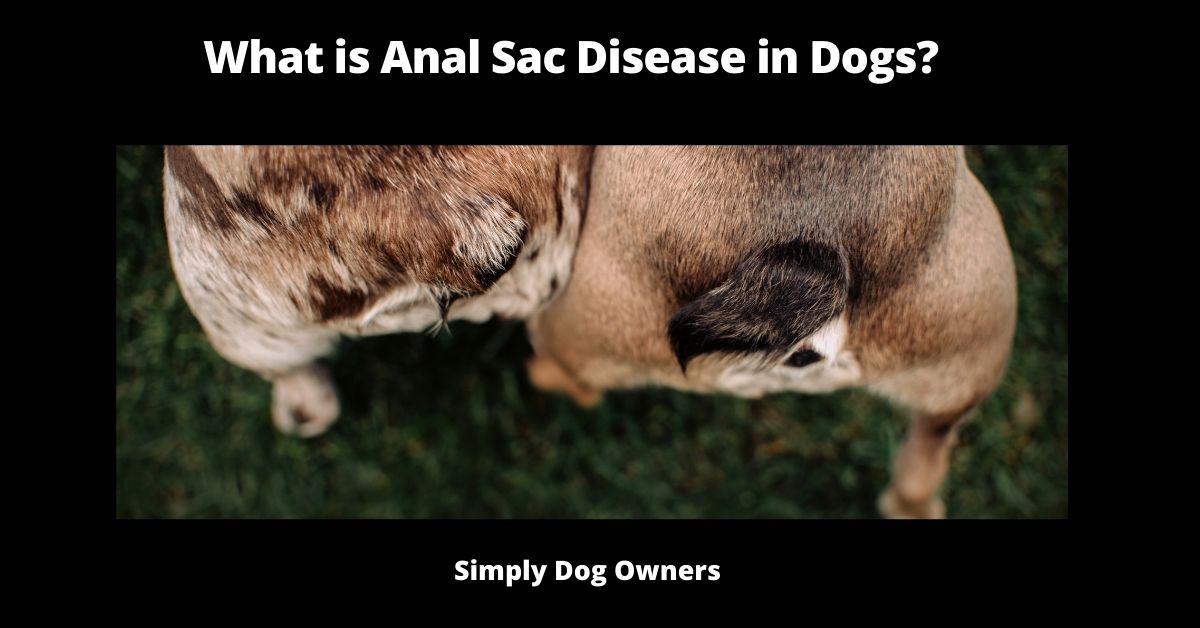What is Anal Sac Disease in Dogs?
Anal sac disease is a relatively common problem in dogs. It is caused by a build-up of material in the anal sacs, which are small pouches located on either side of the anus. The material in the anal sacs can become infected or abscessed, leading to a great deal of pain and discomfort for your dog. In this blog post, we will discuss the symptoms and treatment options for anal sac disease in dogs.
What are Anal Sacs and what do they do in Dogs?
Anal Sacs in dogs are two small sacs located on either side of the rectum, just in front of the anal opening. These sacs produce a foul-smelling secretion that is used to mark territory.
Anal Sac Impaction is when these sacs become blocked and the secretions cannot be expelled. This can cause discomfort and even infection. It can be very painful for your dog and may require veterinary attention. What is Anal Sac Disease in Dogs?
If you notice a foul smell coming from your pet, it’s important to get them checked as soon as possible.

How do Anal Sacs become Impacted?
The most common cause of Anal Sac Impaction in dogs is due to constipation – which results when stool gets stuck inside one or both sides of their body (usually near where feces come out). This can happen if your dog isn’t getting enough exercise, is eating a diet that is too high in fiber, or they have a health condition such as diabetes.
Other things that can put your dog at risk for impaction include:
- Having anal sacs that are too big or too small
- Having a narrow opening to the anus (anal stenosis)
- Having tumors or abscesses around the anus
- Getting constipated often
What are the symptoms of Anal Sac Impaction?
The most common symptom of impacted anal sacs is discomfort – which may cause your pet to scoot their bottom on the ground, lick their backside excessively or cry out in pain. Other symptoms include:
- Swelling or redness around the anus
- Fever
- Drainage from the anus (which can be bloody, smelly or both)
- Lethargy
If your pet is displaying any of these symptoms, please take them to the veterinarian as soon as possible. Untreated anal sac impaction can lead to serious health problems.
How is Anal Sac Impaction Treated?
The best way to treat anal sac impaction is by emptying the blocked sacs. This can be done manually by a vet, or with the help of an instrument called a speculum. If there are any tumors or abscesses present, they will also need to be removed. In some cases, antibiotics may also be prescribed.
Prevention is the best way to avoid anal sac impaction in dogs. Make sure your pet gets plenty of exercise, eats a healthy diet, and avoids getting constipated. If you have any concerns, please speak to your veterinarian.
What are the Signs of Anal Sac Disease in dogs, and how can you tell if your Dog has it?
Signs that your dog may have anal sac disease include:
- Scooting or dragging their bottom on the ground
- Licking their backside a lot
- Peeing and pooping in unusual places
- Having trouble passing stool
- A swollen, red, or irritated anus
If you think your dog may have anal sac disease, take them to the vet for a check-up. The vet will likely perform a physical exam and order some tests, such as x-rays or ultrasound, to determine if your dog has anal sac disease.
How do you Empty a dog’s Anal sacs?
Here are some steps you can take:
- Place one hand on the left side of your dog’s rear end and lift it (gently) toward his back.
- With your other hand, feel for the two small holes that are located just below your pet’s tail. These are where you will find the anal sacs.
- Place your index finger inside the hole and apply pressure. The fluid in the sac should empty out easily. If there is resistance, check to see if you are in the right place; it may take a few attempts before you find the correct location.
- Once all of the fluid has been removed from one side, repeat this process for the other side. You will know when both sides have been emptied by feeling with your fingers that there’s no more liquid inside them.
What does the Fluid look and smell like from your Dog’s anal Sacs?
When you squeeze the dog’s anal sacs, a thick and sticky brownish substance will ooze out. It is sometimes solidified or semi-solid. The fluid consists of fatty acids (triterpenes) that have a distinctive odor that is secreted by sebaceous glands lining the walls of the sac. They secrete an unpleasant smelling fluid as part of their scent-marking behavior to mark territories or attract mates
This fluid consists of fatty acids (triterpenes) that have a distinctive odor. Dogs with anal sac issues are usually very sensitive in the rectal area and do not like to be touched there.
Depending on your dog’s breed, size and nutrition you may see different consistencies of fluid coming out of their anal glands when they squeeze them. For example, some fluids can look like cottage cheese or toothpaste while others can resemble thick watery substances.

Final Thoughts – What is Anal Sac Disease in Dogs?
In summary, anal sac disease is a common and painful condition in dogs caused by an infection or inflammation of their anal glands. The best way to prevent this problem from occurring is by keeping your pet’s weight at the recommended level, avoiding any activity that might cause them strain when going potty, and ensuring they eat healthy food with plenty of fiber which aids digestion.
If you are unsure whether your dog has developed this issue, consult with your veterinarian as soon as possible because if left untreated it could lead to more serious health problems like sepsis/blood poisoning!

